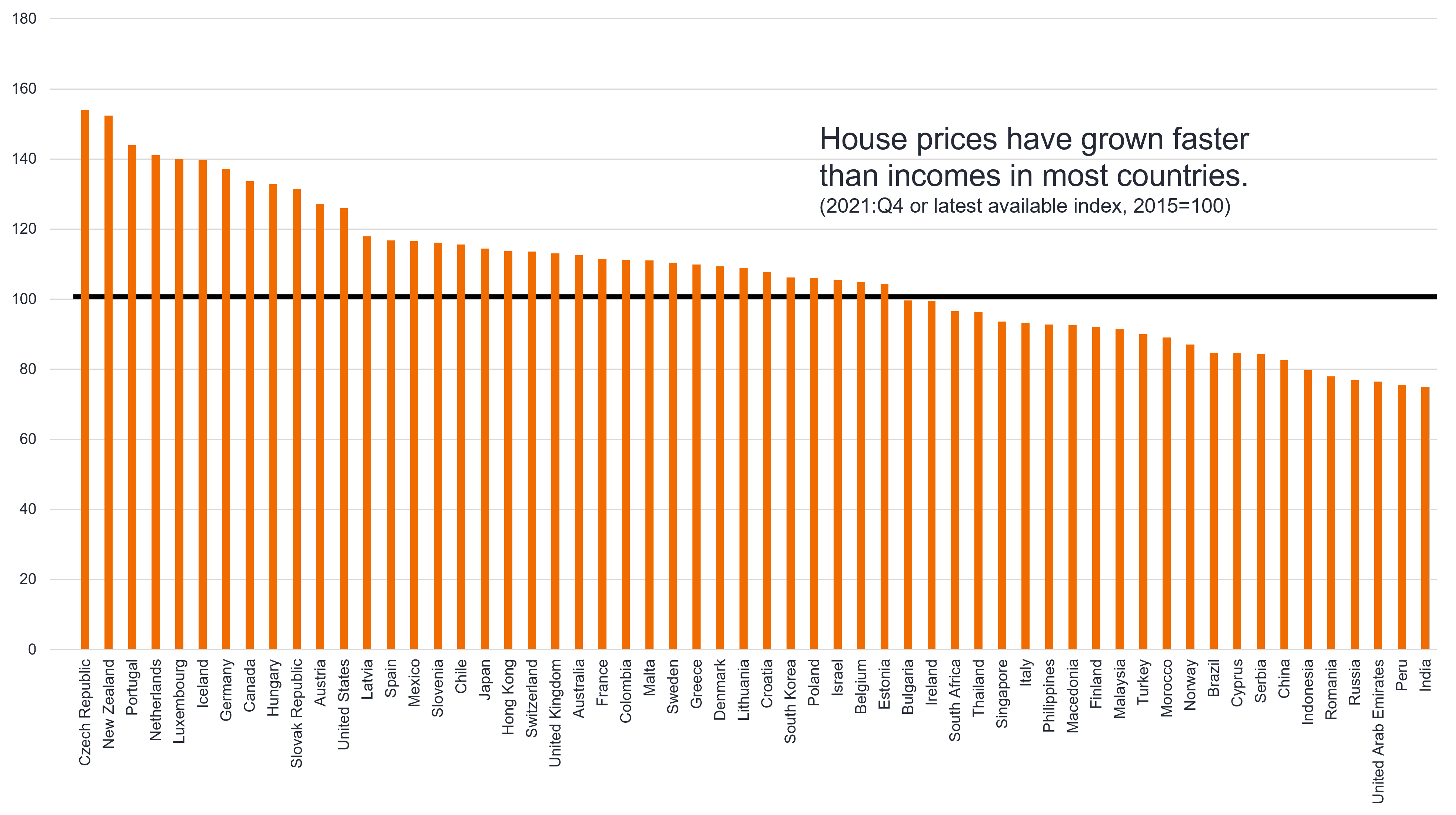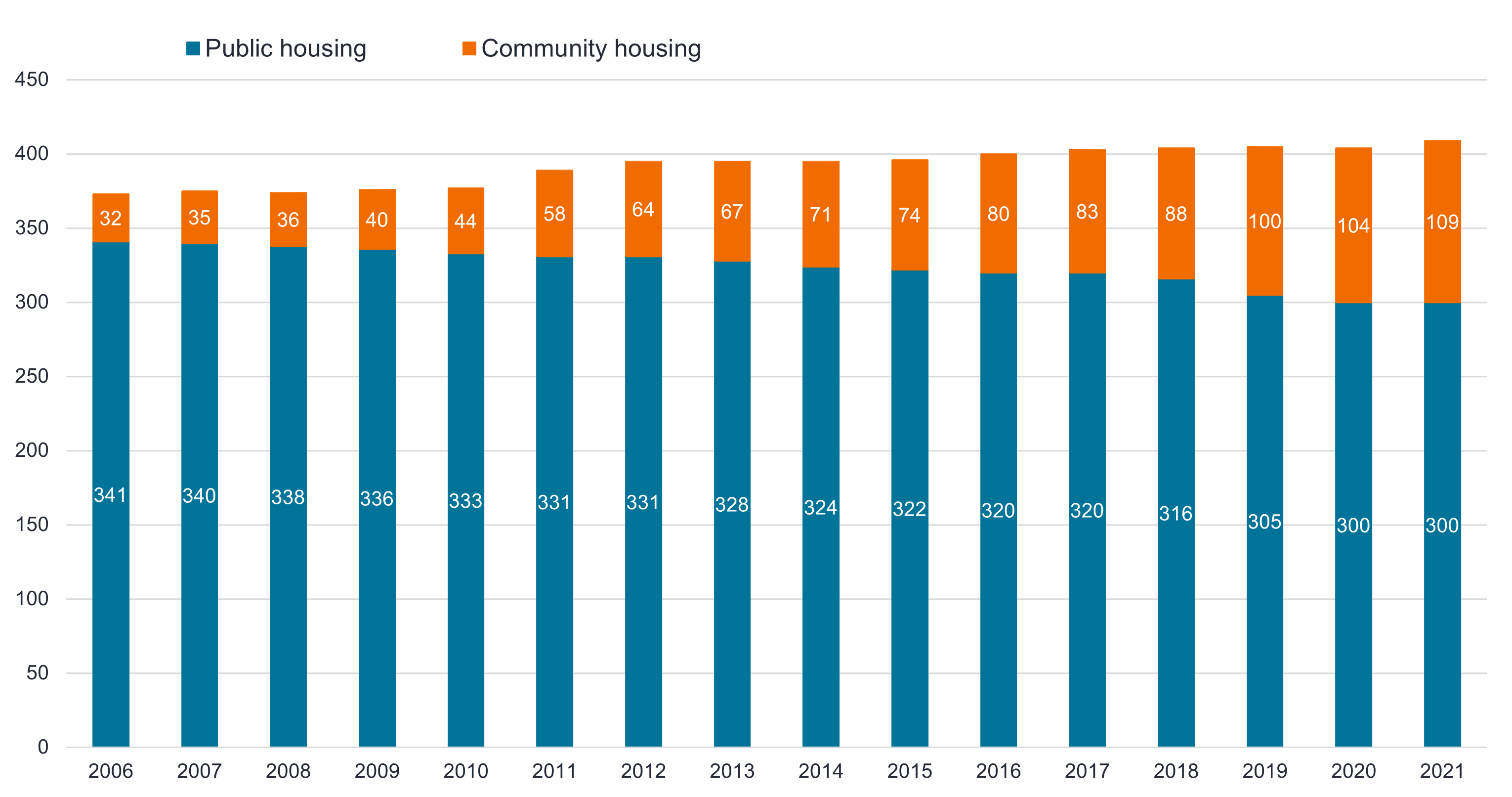Can the bond market help solve the housing affordability crisis?
Turning the tide
The urbanisation of cities across the globe has seen demand for housing far outstrip supply. It’s led to an explosion in property values and rents, as well as exacerbating shortages.
With modest wage growth in many countries simply unable to keep up, this has created an undesirable situation that stands to entrench inequality.

House price to income ratio around the world
While tailored solutions for each location will be required, social, sustainability, and sustainability-linked bonds stand to play a pivotal role in alleviating some pressure.
Housing affordability: by the numbers
- Research suggests that by 2025, 1.6 billion people are expected to be affected by the global housing shortage1.
- The world needs to build 96,000 new affordable homes per day to house the estimated 3 billion people who will need access by 2030.
- In 2022, none of the 94 major global markets were considered affordable, the first time in 19 years2.
How bonds support Australia’s housing market
In Australia, housing affordability is felt acutely across the country, especially in capital cities like Sydney and Melbourne. This has prompted the Federal Government to recently announce a $10 billion Housing Affordability Fund to help address the issue.
If passed by Parliament, the Fund will bolster the Government’s existing support measures which already include funding for the National Housing Finance and Investment Corporation (NHFIC) and providing credit for loans issued by the Affordable Housing Bond Aggregator (AHBA).
These low-cost and long-term loans are provided to registered community housing providers with lower interest rates. Discounted rates can only be offered because the NHFIC issues bonds to raise the capital needed to fund the AHBA’s loans.
In 2021-22 alone, the NHFIC approved $509.3 million of new loans to community housing providers, saving them an estimated $96.2 million in lower interest and fees and enabling the construction of 3,296 social and affordable homes3.

Pacesetters reveal growth pathway
While the Australian subsidised housing sector is nascent, it is growing in line with other markets, including the UK and US, where large institutional investors are driving activity.
In the UK, approximately 70% of the capital to build affordable housing is currently sourced from private financing, up from 30-40% in the 2000s. In the US, annual transaction volumes are approximately $US36 billion in 2021, up from $US1.3 billion in 20114.
Building dreams: The case for social bonds
Affordable housing is a basic human need that has become increasingly difficult to access for many. While more investment is flowing into subsidised housing, substantially more is required to keep pace with demand. With issuers increasingly turning to sustainability bonds to create affordable housing supply, it presents an opportunity for investors of all kinds to participate in a growth area.
Learn more
We have a tactical investment approach with regular asset allocation shifts between cash, fixed interest and higher-yielding securities, designed to perform well in all stages of the interest rate and credit cycle. Visit our fund profile below for more information.

1 fund mentioned
.png)
.png)